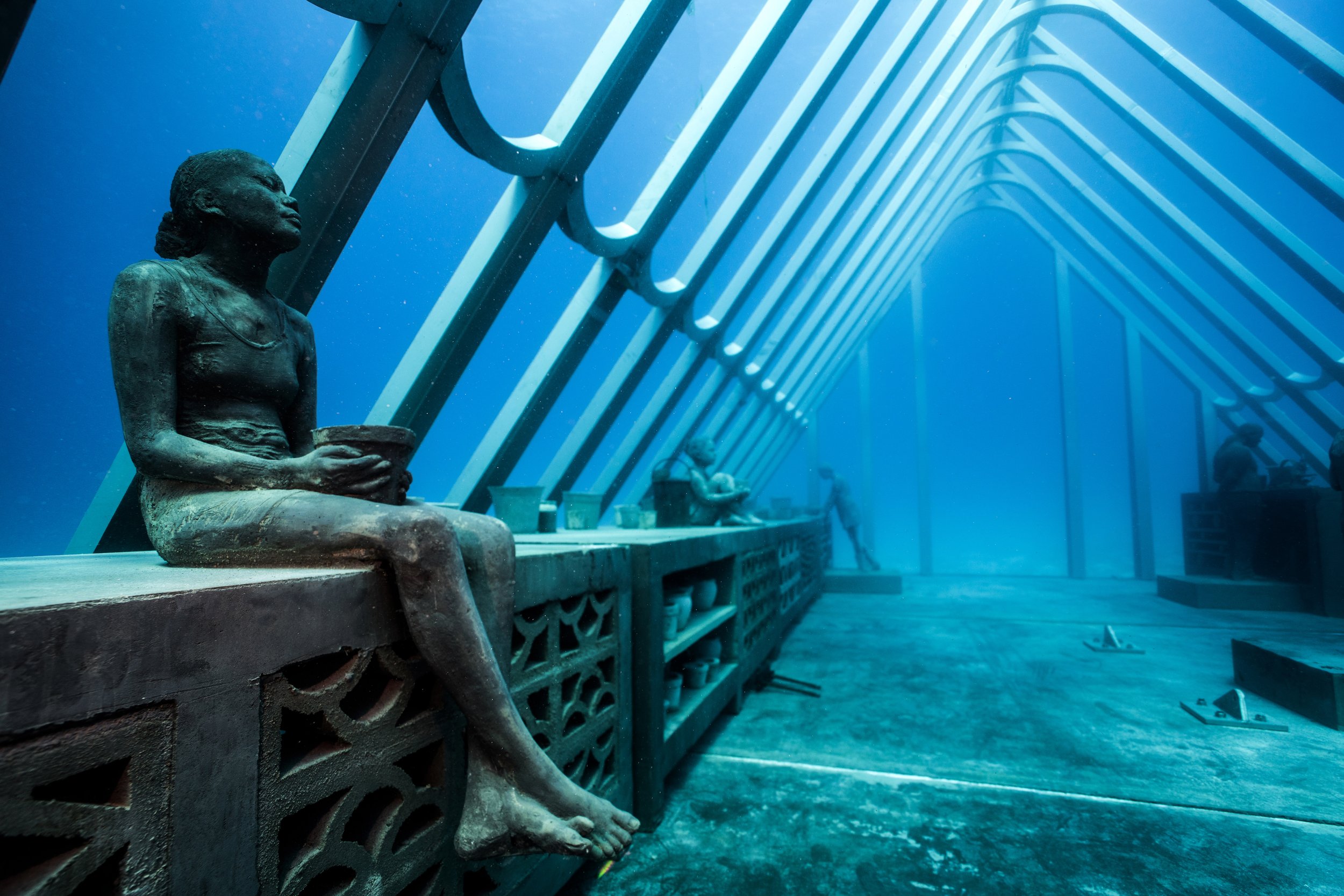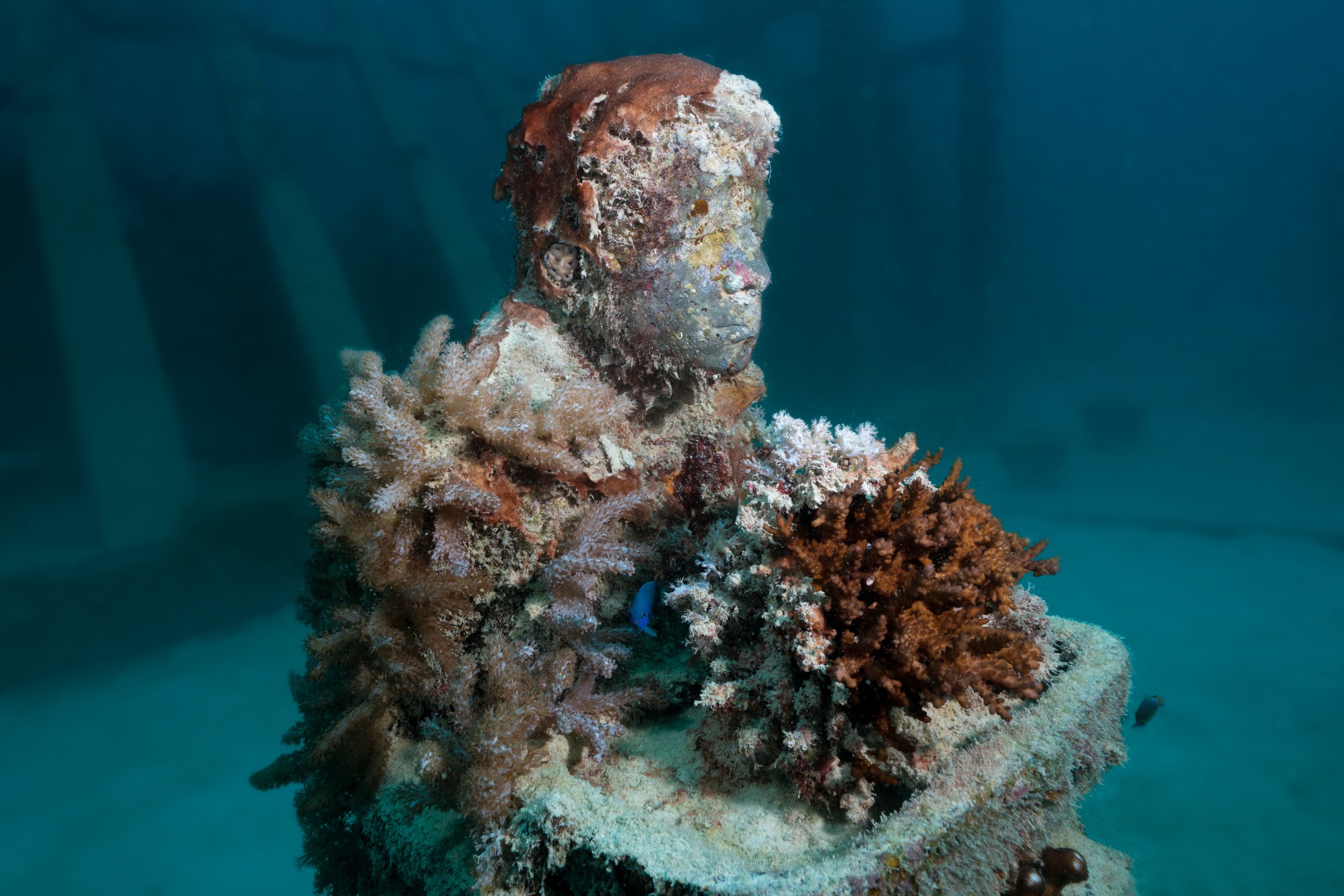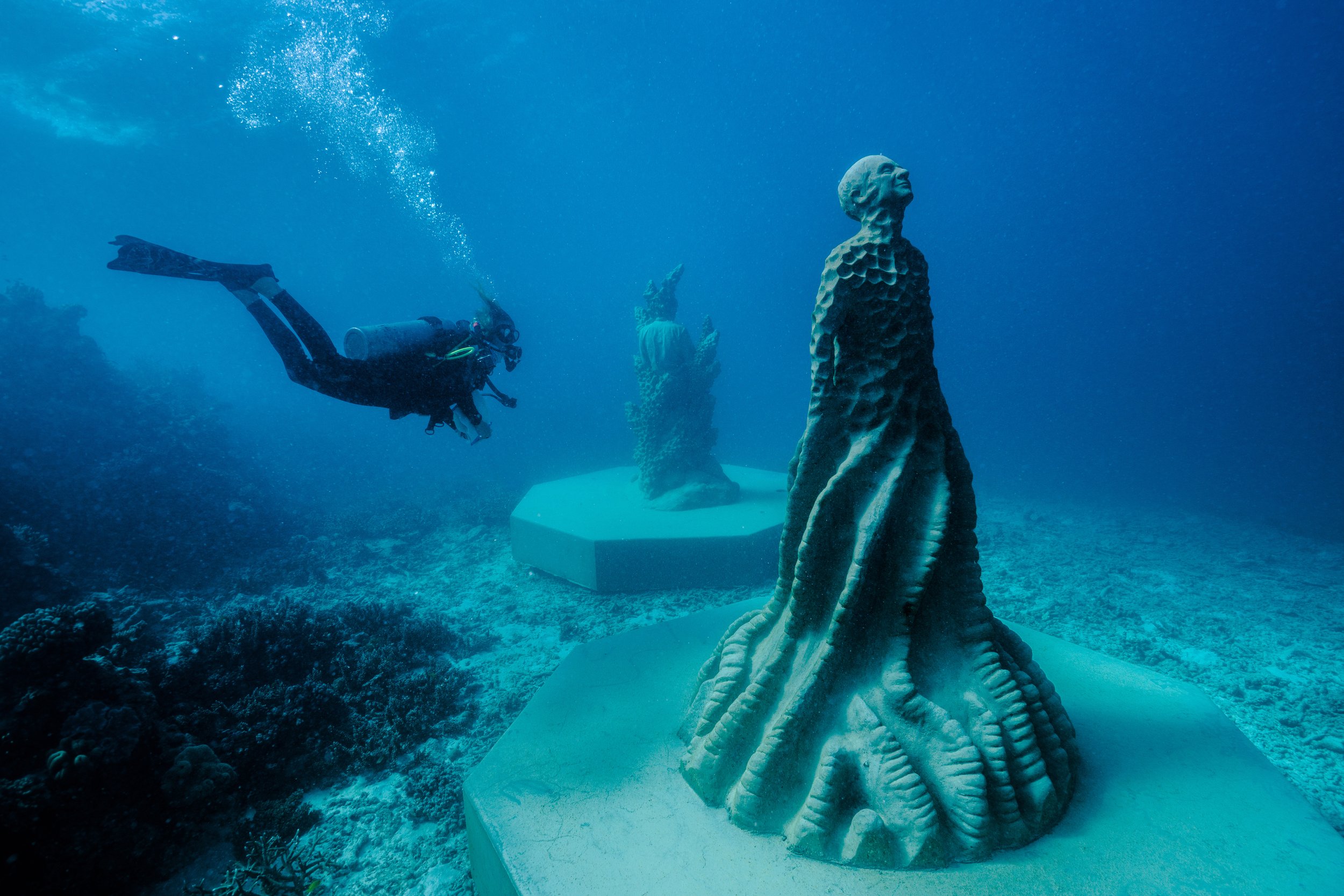
VISIT
Scuba dive, free-dive or snorkel into a world of wonder and experience the beauty of stunning underwater sculptures.
Installations
The are dozens of underwater art installations including the Coral Greenhouse and Ocean Sentinels at the Museum of Underwater Art as well as the Ocean Siren statue at the Strand promenade in Townsville - enough to keep you busy for multiple days of diving and snorkelling and exploring! This is one of the top things to do around Townsville & Magnetic Island and an absolutely must see on the Great Barrier Reef in Queensland.
Coral Greenhouse
The Coral Greenhouse is a groundbreaking underwater museum located in the southern hemisphere, created by Jason deCaires Taylor. It not only holds the Guiness World Record for the largest underwater art structure but also offers a fresh and immersive perspective on the Great Barrier Reef and its ecology by exploring marine science, coral gardening, art, and architecture.
World Record
Largest Underwater Art Structure
Ocean Sentinels
The Ocean Sentinels by Jason deCaires Taylor is a collection of sculptures that blend human figures with natural marine forms. These sculptures represent influential Australians who have made significant contributions to marine science and conservation.
Ocean Siren
The Ocean Siren by Jason deCaires Taylor is a 4m-high illuminated sculpture featuring Takoda Johnson, a young indigenous girl from the Wulgurukaba tribe. Holding a traditional Bayliss shell, she serves as a warning signal for the Great Barrier Reef, symbolising the risk of warm seas as her colour changes based on daily water temperature of the reef.
Secure a Spot
Space on tour boats is limited so book your spot now to not miss out!
Maps
All of the underwater art installations including the Coral Greenhouse and Ocean Sentinels are located at the main Museum of Underwater Art site at John Brewer Reef on the Great Barrier Reef in the Sea Country which can be reached by boat from Townsville. The Ocean Siren statue is located at the Strand promenade in Townsville, in case you don’t want to get your feet wet just yet.
★★★★★
“Absolutely amazing dive site. The installations itself are great but coupled with the Reef it makes for an incredible experience.”
Michael Brennan, Visitor
More Reviews
Diving & Snorkelling
Everyone should have the opportunity to experience the beauty of the underwater world which is why we've made sure there is something for everyone - scuba divers, free-divers or snorkelers of all experience levels are welcome at our museum and will find plenty of explore. The site is located in a protected part of John Brewer Reef, so guests can relax and enjoy the experience without worrying about strong currents or other hazards. Explore the deeper Coral Greenhouse or more shallow Ocean Sentinels and make sure you take a side trip to the beautiful reef which is just a short swim away.
After your dive
Use iNaturalist to enhance your underwater experience and contribute to marine science. By uploading your dive and snorkel photos to the John Brewer MOUA project on the iNaturalist platform, you can easily identify the fish species you encountered during your underwater adventure. This will not only enable you to learn more about the diverse marine life you observed but also make you a citizen scientist and help provide valuable data points for marine biologists and researchers studying aquatic ecosystems.
FAQs
-
The underwater sculptures at John Brewer Reef are public art and can be freely accessed by recreational visitors to the Marine Park. However, if tourists would like to visit the John Brewer Reef sites by vessel and have the guidance of an expert guide, there are several commercial tourism opportunities available.
-
Absolutely! Scuba diving and snorkelling are highly encouraged at the sculpture sites. They offer an excellent opportunity to witness the underwater sculptures and explore the surrounding reefs. The sites are designed to accommodate both snorkelling and scuba diving enthusiasts, with shallow water areas (4-6m) specifically intended for snorkelling and deeper sections (12-18m) suitable for scuba diving.
-
To ensure the preservation and respect for the underwater sculptures, we advocate a no touching policy, similar to coral reefs. We aim to promote Responsible Reef Practices and will provide interpretive manuals, training, websites, and brochures to educate visitors about the importance of not touching the artworks. Over time, the sculptures will naturally accumulate marine life as corals and other organisms attach to them. This process not only adds to their visual appeal but also integrates them ecologically into the local environment, making them even more fascinating for visitors to observe.
















